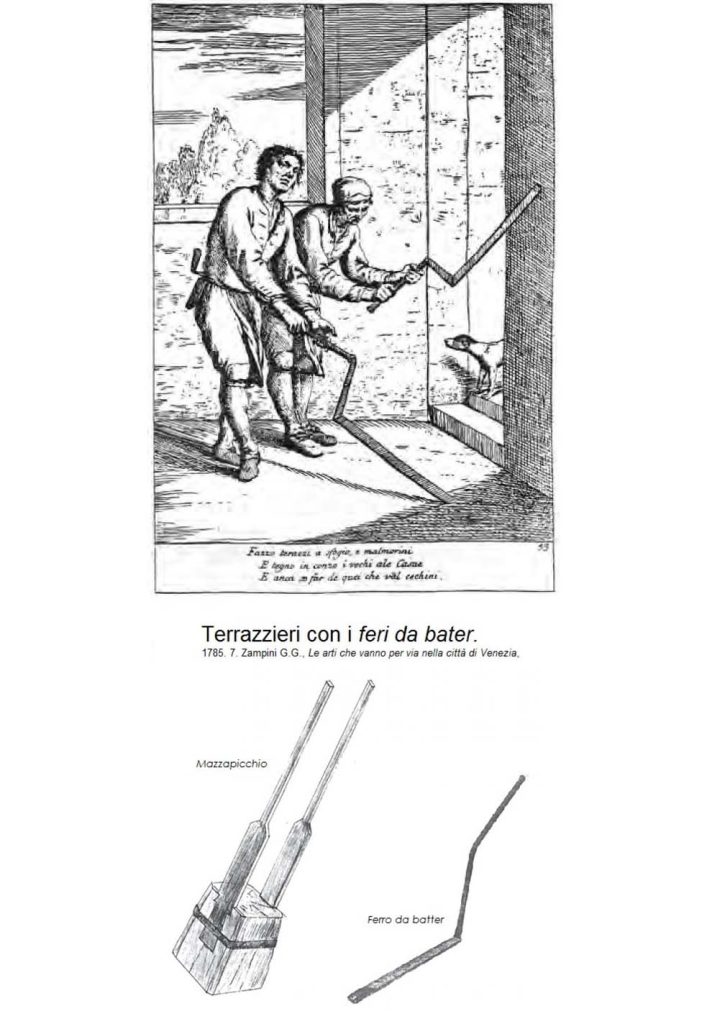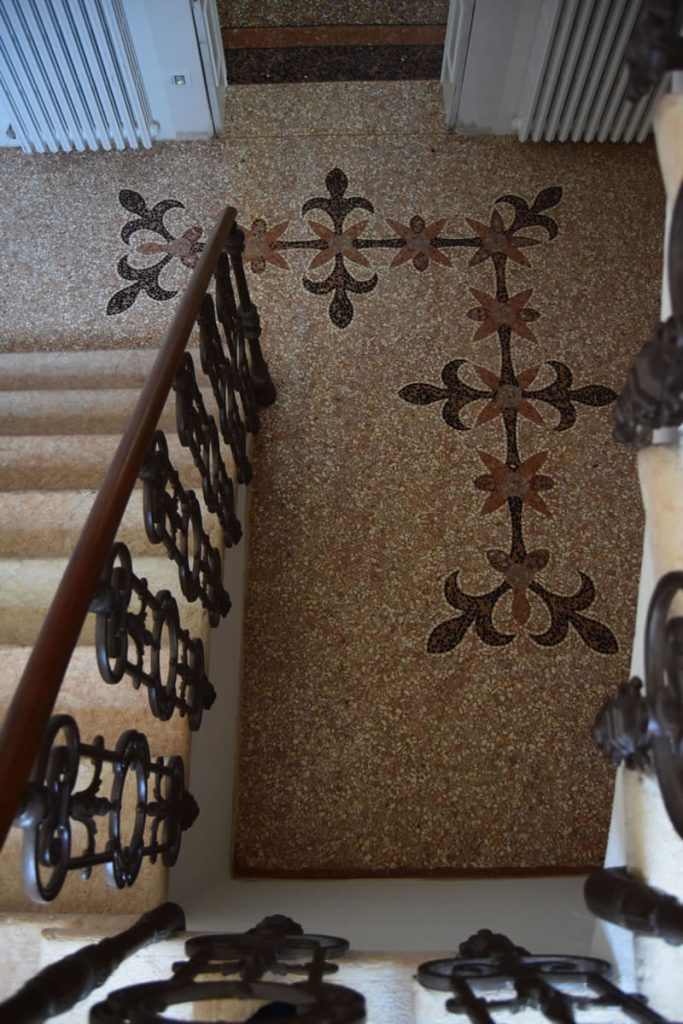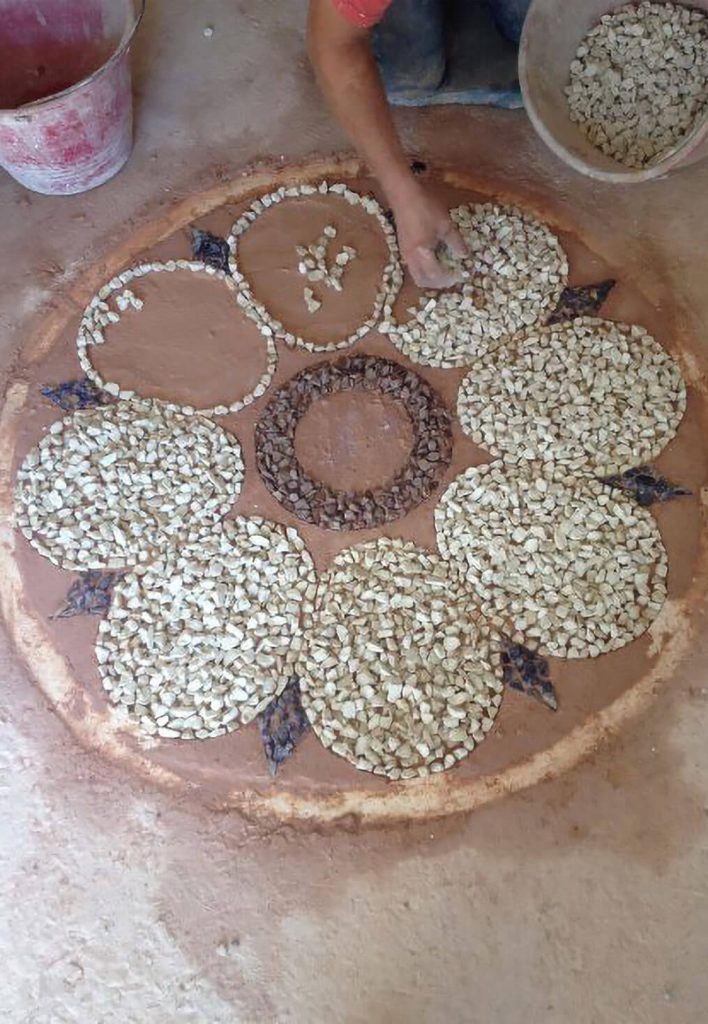
The Venetian floor, also called terrazzo alla veneziana and battuto alla veneziana, has ancient origins. The first floors of this type date back to Hellenistic Greece (between 323 B.C. and 31 B.C.), when they were made for decorative purposes in houses or temples. At that time they were built using carefully arranged river stones and fixed with lime and clay.
In the 16th century, Friulian craftsmen rediscovered and revalued this ancient ornamental decoration: they began making Venetian-style floors using stones found on the banks of the Meduna, Tagliamento and Cellina rivers. Venetian battuti became an integral part of many Venetian Renaissance buildings, where they were appreciated for their beauty, uniqueness and particular resistance to wear and tear.
During the Middle Ages, the Venetian terrazzo technique spread not only in Venice, but also in other cities in Italy, such as Florence and Rome, where it found wide use in both outdoor and indoor contexts. Back then, however, not even the masters of this ancient craft could have imagined how far the Venetian floor would go. In the following centuries, up to the present day, this flooring has managed to embellish different types of rooms.
Venetian floors are known for their use of fine materials such as marble, which was preferred for its durability and beauty. This flooring can have a matt or polished surface, depending on the processing you prefer, and is available in different colours and grains, making it versatile in construction and interior design.
The typical characteristic of the Venetian terrazzo has always been its high degree of robustness, which corresponds to extreme practicality. Today, just as in the past, the technique used to create these floors is very complex and requires great expertise. The terrazzo masters, as the craftsmen who make this type of floor are called, are true artists capable of creating unique floors that are always different and customised.


Art historians have pointed out the different periods in which this paving technique was used:
It was common to find Venetian flooring in aristocratic residences, where it gave a touch of elegance thanks to the intricate patterns and bright colours.
In churches and places of worship in general, this flooring, with its more or less complex workmanship, conferred elegance and accentuated sacredness.
Today, Venetian floors can be found in every context. Their versatility and timeless beauty make them an ideal choice for any environment.

From its Greek origins to the renaissance we are witnessing in the contemporary world, this style of flooring has gone through centuries of evolution. Today, it continues to enchant with its timeless beauty, showing us that ancient art forms and traditions can still find a place in our society.
If you are fascinated by the history and timeless beauty of Venetian floors, take a look at our floors. Discover how we can transform your space with this special flooring.
Fill in the form with your best data; our staff will contact you as soon as possible to provide you with all the information you need.
Via Cassiani, 181/b
41122 – Modena (Italia)
Tel. +39 059 450001
Mail. info@franchinipavimenti.com
© 2023 Franchini Pavimenti Srl – VAT 03867810362 – All rights reserved | Site developed by Seo Siti Marketing